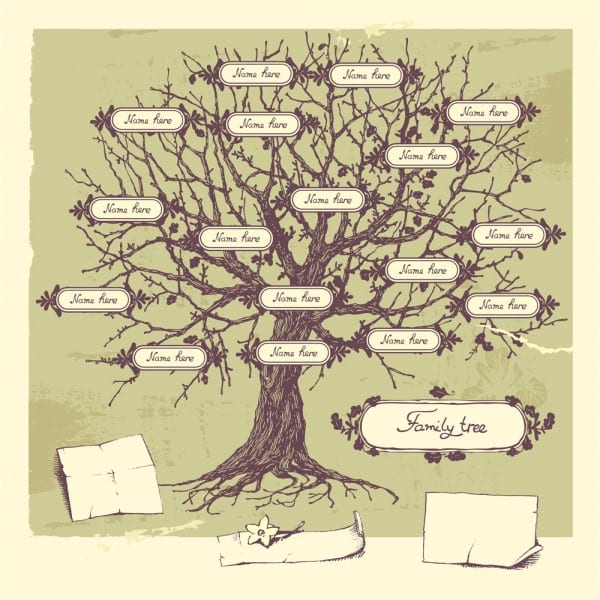If you are a relative newcomer to genealogy beginning to build your family tree, then you are probably deep in digging on the Internet and in various libraries for your ancestors' details. It is a very exciting hobby, and these days with more and more documents and records digitized and available with a click of your mouse, you are able to find wills, censuses, obituaries, and more.
Before too long, you may have several hundred ancestors listed in your family tree. Unfortunately, some amateur genealogists do a great job of research, but a terrible job of recording their information! After awhile, there are likely to be many dates, names, places, but not a speck of proof or any details which can support this particular ancestor in this particular place at this time.
There are several places online which can provide you with ways to cite your research sources correctly; search on Cyndi's List (cyndislist.com) for "citation". Plus, your local library likely has the #1 source textbook written by Elizabeth Shown Mills, which you can also look through on how to cite internet sources, or articles in family tree magazines, or your family Bible, etc.
Some family tree software programs will help you cite your sources for major life events, and this can be very helpful. Eventually you will be able to print out pages or booklets or even a book of your ancestors family trees; all of these publishing options are available in most family tree software programs. Check them out carefully before you decide which one to actually purchase – most provide you with 7-14 days free trials.
But another important detail about keeping records relates to your very own family history. I have noticed that people have fascinating information on their great-grandparents or great-greatgrandparents, but very little on their cousins or aunts/uncles, parents, grandparents. For some reason, we tend to overlook our closest relatives because we are so focused on ancestors further back!
Since your family tree is your very own “true story”, wouldn’t it be exciting to make sure your own great-grandchildren have some interesting details of YOUR lives? As well as your parents’ and grandparents’ lives? Take some time over the next month or two and make a focus on gathering more information on your closer relatives. Call up your aunts or grandparents – they likely know much more than you think! Particularly if you tickle their memories with some photographs you have found with no names or dates on the back, but which appear to be about 30-50 years old or thereabouts! Photographs are very useful at helping older relatives remember events, details, occupations, additional relatives, immigration dates, military service, and more. You might want to actually record a relative, and interview them for your records. Make sure you transcribe that record you make as soon as possible, so that anyone else in your family can access it afterwards.
Let your relatives know that you are very interested in researching and recording your recent family history, and share with them some of the interesting details you have found so far. I was able to send a 2nd cousin a copy of the passenger list of her grandfather on a specific ship from England to Canada, at the turn of the previous century. From that “gift”, I was able to find out more about her grandfather, including a possible Irish County that our respective grandparents came from in the 1870s. Another 3rd cousin was able to share a copy of a photograph of her great-grandmother – the sister of my great-grandfather. Wonderful details pop up when you begin to share what you are doing, and ask if anyone has anything that might help in the search. Photograph albums, memorabilia, letters, and more.
Check in with your family members and start recording your own history. For example, do your family members have traditions of how they celebrate certain holidays? birthdays? important family events? historical events? Does your grandmother or your aunt have some fantastic unusual recipes that you still haven’t learned to make? Does your uncle still do wood carving – which he learned to do in a 1940s prisoner of war camp? There are so many questions you can ask your relatives once you get started. Take photographs as well, and date/name everyone in the photos, for posterity. Write down those recipes from your grandmother or great-aunt, with comments on when the family usually eats them, or what is special about a particular recipe. Type out those stories that most everyone knows – about that incredible train trip your grandparents made in 1909, or about the wedding dress made out of lace tablecloths, or about the three little children who died in a polio epidemic in the 1880s, or about how your great-grandfather dressed his own turkeys because he used to be a butcher, or… I’m sure you can see what I’m talking about! Your family stories.
Start right now to make sure that you will be able to leave a true record of your history, in a way that your great-grandchildren will be able to access that history, see the photographs, read the stories, cook the recipes, look at the documents of birth/marriage/death/naturalization and more. In this way, you will be helping your family descendants see themselves in a larger context of history, a personal history, which you have recorded – this year.
Use a simple yet very practical guide: RootsBasic to help you get started. Packed with tips and strategies, this booklet will help you be proud of your family tree research. The 16 handy forms included provide practical methods for you to keep track of your research, your specific ancestors, sources, correspondence, and more. Whether you are a first-time family tree researcher, or have been building your tree for some time, you will find information you can use immediately to help move your ancestor research forward.

